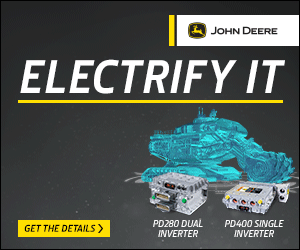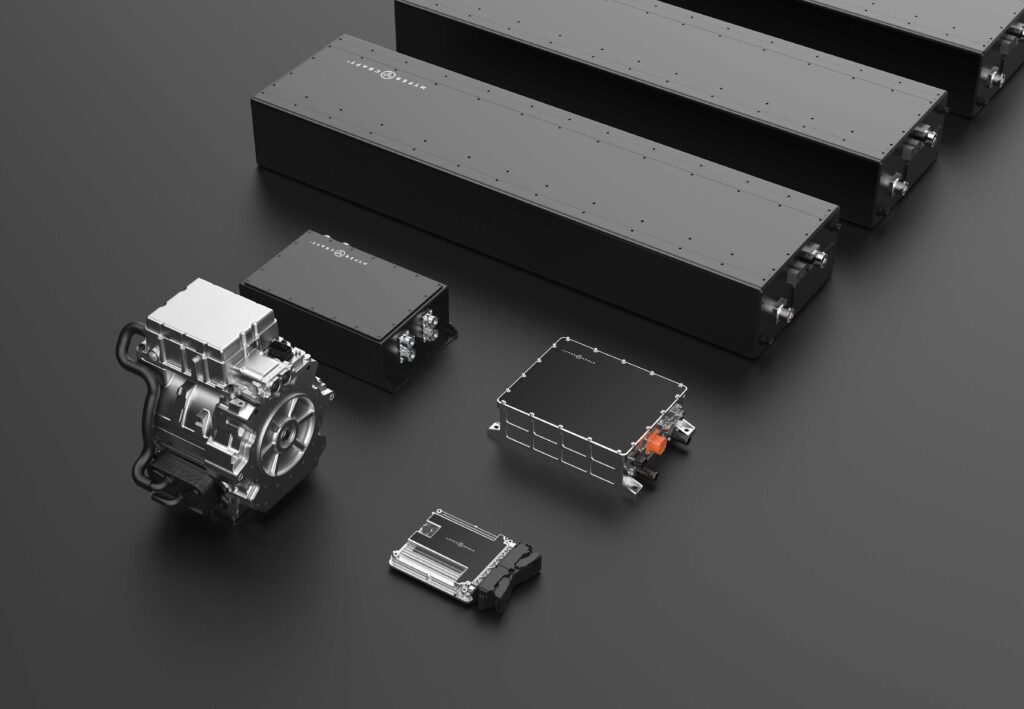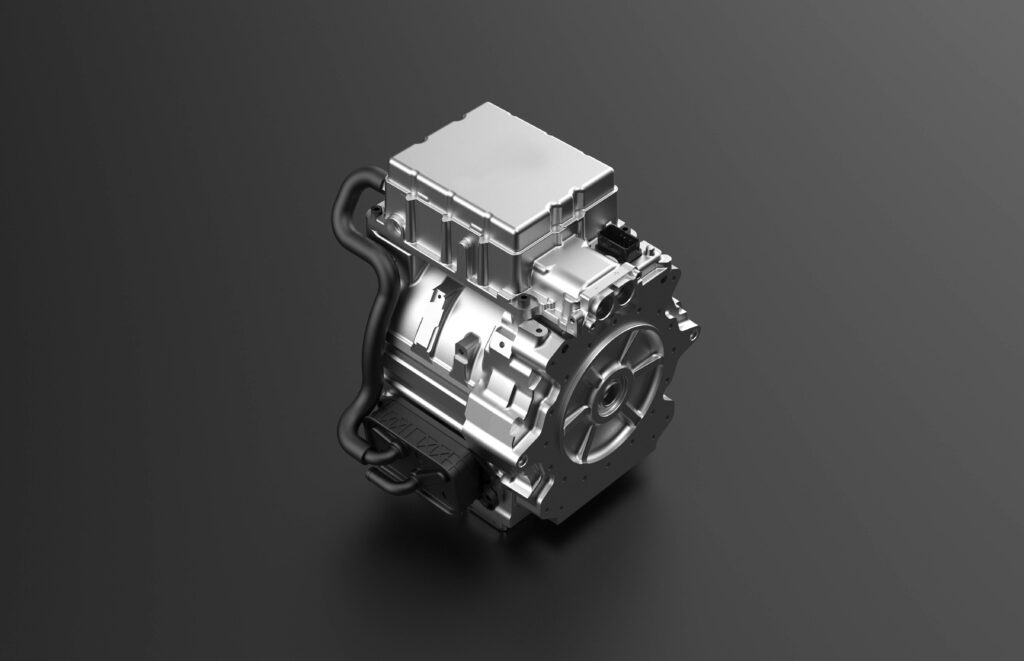Halevai electric boat
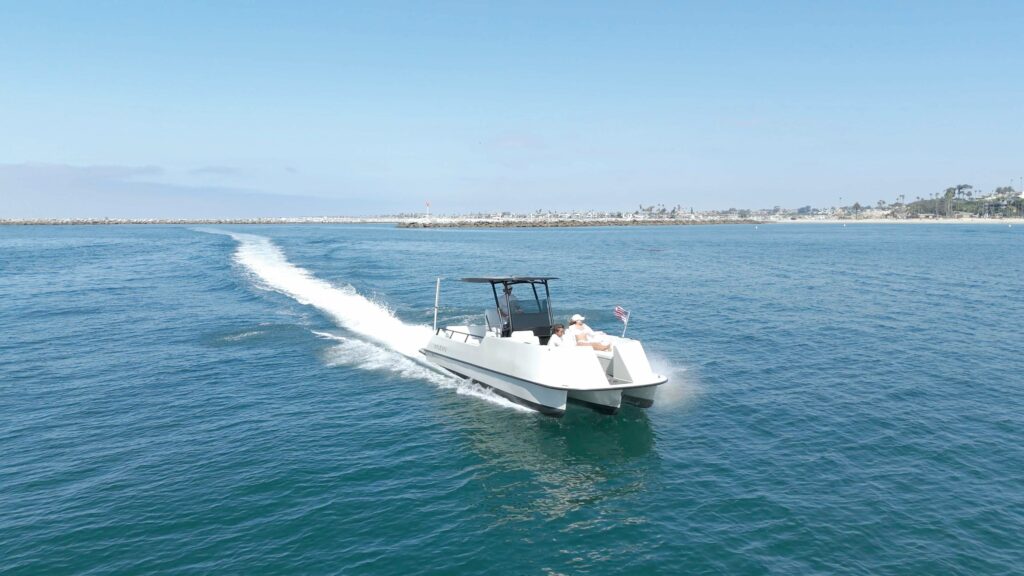
(All images courtesy of Halevai)
Setting a new course
Halevai is on a mission to redefine the recreational marine market, combining an electric powertrain with a trimaran hull, reports Will Gray
It might look like a relatively ordinary recreational day cruiser, but in an industry that is traditionally as slow moving as a heavily loaded tanker, the design of Halevai’s model2050 – which pairs an innovative but highly standard electric powertrain with an ultra-efficient trimaran hull – places it firmly in the ‘ground breaker’ category.
In terms of engineering, its creativity lies in its simplicity, and the decision to stick with stock parts and mainstream materials in its quest for mass adoption, which could send a rippling wave of change across the sector.
Frank Heidinger, a former hospitality and events manager, was inspired to set up Halevai, which translates as “we will”, after becoming involved in Parley for the Ocean, focused on plastic recycling.
He was impressed not only by their approach – “they were solution finders and aggregators, not just activists” – but also by their long-term philosophy that by extending the lifecycle of waste through biotech and innovation, their small actions could build into a bigger movement over the long term. That lit a spark and his entrepreneurial mind soon spotted an opportunity.
“I was spending a lot of time on boats with Parley for the Ocean and I kept seeing these locally based watercraft, weekend recreational vehicles and short-range work vehicles, and wondering why no electrification work had been done,” Heidinger recalls.
“I could see what was happening in the electrification of road-based micromobility, cars and short-range trucking. But, apart from some
low-power developments for ferries and short-range mobility for rivers, lakes and waterways in Europe, it wasn’t really happening in the marine sector, so I started to look into it.”
Heidinger identified the recent growth in recreational day boats as the perfect opportunity to drive forward his long-term desire to improve the sustainability of the marine sector.
Typically used for entertaining, with open layouts and large aft swim platforms, they have inspired a movement away from multi-day cruising in favour of days out on the water, returning to the marina at night – a use case that just happens to be perfectly suited to electrification. So, in 2020, he launched his small manufacturing company into the highly competitive recreational boat market with an innovative, electric-powered offering.
Electrifying marine vehicles, however, is far more challenging than it is in the automotive sector. On the roads, most modern EVs are either electrified versions of existing vehicles or based on existing design trends, rather than being innovative to the core.
On the water, hydrodynamic forces demand a very different approach. “There is a lot of resistance and you cannot just electrify existing boats. Well, you can, but it’s going to be very inefficient,” says Heidinger.
“Gas engines are cheap and have been made for decades, so designers often just make any hull they want, and if it’s not efficient, they just get a bigger engine and overpower it. You cannot do that on an electric boat.”
The energy density of fossil fuels is about 50 times greater than that of a battery, so with an electric motor, any extra power requires more battery storage to deliver it. That comes with added bulk and weight, which drops the hull deeper into the water and makes it more inefficient. Quickly, the numbers simply do not add up. The only solution is to design an ultra-efficient hull, so Heidinger hired naval architect Thomas Smith and set him to work. As a result, the biggest engineering innovation on this boat is beneath the water.
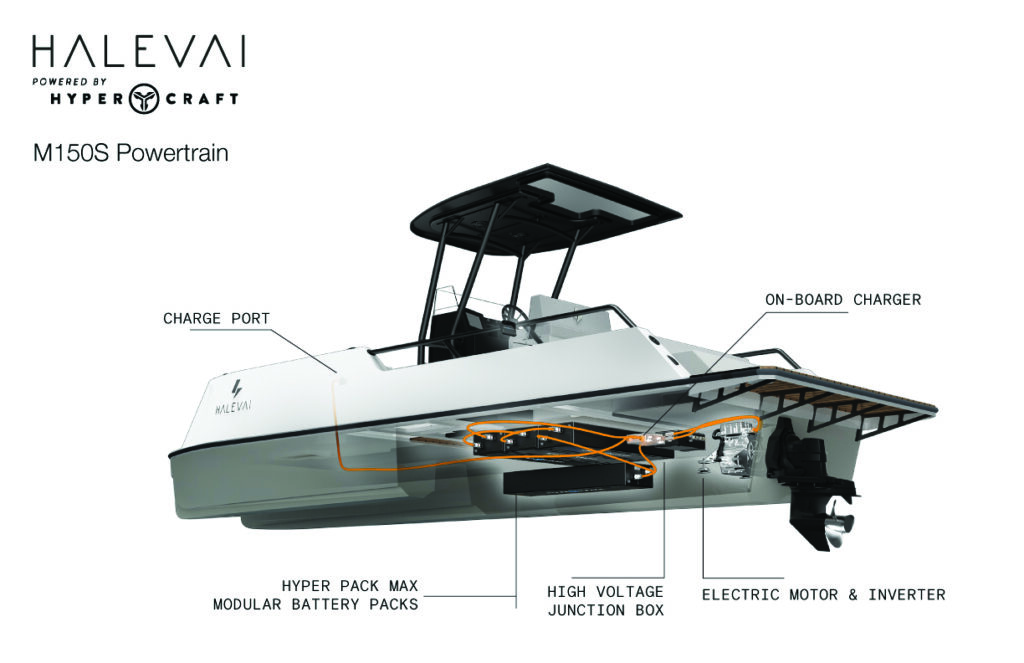
Hull design and optimisation
The Halevai model2050 has a tri-hull design, which was deemed to offer the best balance between flow efficiency, battery storage and usability. A traditional, V-shaped, single hull was quickly rejected as impossible to electrify, while a twin-hull catamaran still suffered issues with hull depth at the target operational speeds due to the weight of the batteries. Adding a third hull not only made the vessel more buoyant, but it also offered far better flexibility for battery storage.
“The batteries have to go below the deck, and the tri design had better weight distribution and a lot more room within the centre hull, so we went with that, and began to trial several shapes and widths,” says Heidinger.
Smith then tried out various dimensions, plugging the evolving designs through CFD programmes and flow dynamic studies to determine the optimum solution for the most efficient tri-hull design. This resulted in a vessel measuring 24 ft long with a beam of 8.5 ft – a figure selected for functionality as that is the widest item you can carry on a standard trailer in the US.
While the simulations suggested a slightly narrower beam could have been more efficient, this would have reduced the ability to move around on deck.
The only issue with tri-hulls is their operational sensitivity. If they are running at their ideal weight up on the plain, they can be ultra-efficient, but as soon as they become overloaded they drop down in the water and that efficiency quickly drops off. If the Halevai were to achieve its target operational speed, it was vital for its efficiency window to be as large as possible.
Achieving this, while fitting in all the other elements of the puzzle to deliver the required performance, weight distribution and carrying capacity was a complex challenge.
The key to the model2050’s success is the gap between its hull speed (the speed to which it remains level on the water before the propulsion forces the bow to rise up) and its planing speed (the speed at which the hydrodynamic forces allow the entire hull to lift up and skim across the water surface, rather than ploughing through it).
Planing is the most efficient form of travel on water, whereas the transition between hull speed and planing speed is where a boat encounters most force and is least efficient. So, the aim was to not only reach planing quickly but to minimise the period of least efficiency.
Smith spent several months modifying battery locations and weight distribution in his CFD models, sliding elements around to figure out theoretical torques and what effect they would have. He ended up with a hull speed of 7 knots and a planing speed of 11 knots.
Heidinger explains: “The goal of the naval architects was a gap of 4 knots and that is what we’ve accomplished. At around 7 knots, the boat needs about 120 Nm of force and that rises to 240 Nm at around 11 knots.
“Just beyond that, though, as soon as the boat tips onto the plane, the force drops right back down to 180 Nm.”
Once the model2050 is on the plain, the rapidly progressive reduction in water resistance sees the boat accelerate quickly without any need to even touch the throttle.
“You’re either riding at 7-9 knots or you’re on the plain and quickly up to 18 knots,” says Heidinger. “After that, the incremental changes in speed are less significant in terms of power. At 11 knots, you’re putting in a lot of force, but at
21-22 knots, which is our cruising speed, you get better range because the motor is in a more efficient state.”
That, says Heidinger, is ideal for this recreational type of vessel as it will mostly be in a marina, operating in a no-wake zone at 5-7 knots, or cruising in the bay at 18-22 knots, at which point the boat is in ultra-efficient mode. There will be some occasions when it needs to grind through waves, such as heading out of an inlet in chop or wind, but overall, very little time is spent in the inefficient window.
To give a comparison, Heidinger points to another tri-hull electric vessel he recently went on, with hull speeds of 3-4 knots and planing of 16 knots.
“That is a very big gap and you can literally see the difference, because as soon as you start to move at any speed there’s a lot of pressure at the front of the boat and it stays for a long time, so they had to overpower the vessel to withstand those forces,” he says.
“As a result, it has big battery packs, a dual-prop motor instead of our single-prop, and it costs twice as much on the manufacturing side. All of that gets passed along to the customer.”
Manufacturing in flexibility
Given the company’s mass-market ambitions, the boat had to be capable of fitting into as many day-use markets as possible, from family cruiser to functional workboat. To achieve this, the team opted for infusion fibre-glass moulding, which is the most efficient, clean and low-resource way to manufacture in fibre glass. They created an innovative, modular deck design using different tooling to allow the boat to be optimised for a variety of use cases.
As a recreational day boat, it has an open deck that comfortably houses eight to 10 people, with multiple spaces where groups can form, including a flip-up dining option for six up front and a swim platform at the rear. Safety was taken seriously, with easy access onboard and off, integrated storage for tidy decks, and plenty of places for people to lay down, sit and hold on.
In more functional modes, the rear deck can swap out to create alternative layouts that fit myriad requirements.
“The daybed is an independently tooled part that is then fixed to the hull,” says Heidinger. “It has water runoffs and through-holes that connect up, but the entire area can be removed and replaced by a flat tooling part to create a large, open space for a fishing boat. You can also fit a davit for lifting to suit research vessels or river-monitoring craft.”
The tri-hull design also supports this multi-use approach. With a draft of just 21 in – or as low as 17 in if the drive is pitched up – it has easy access to low-lying areas. The use of fibre glass, Heidinger quickly acknowledges, is far from ideal, but it is a necessary evil for this start-up brand.
“Fibre glass is terrible – and you can write that,” he says. “We are well aware of the issues, but the only way we can make a change is to convert people to electric and renewable power first; then, as we grow as a company, to allocate r&d budgets to look at new materials.
“Right now, we have to build with materials that experts know how to use and are readily available in the supply chain, because if you start to build things out of new tech too soon, you end up getting into a hole.
“Composites and boating are like white on rice. Aluminium boats are great for workboats –we have some workboat projects in aluminium – and it is also good for pontoon boats, but they’re just tubes and plywood decking.
“When you’re dealing with naval architecture and the tooling required to make really heavy-duty boats, most people shy away from aluminium because of the challenges in the construction process. There are not as many yards and capabilities, and it tends to come at a much higher labour cost, whereas composites are strong, lightweight and people know how to build with them at scale.”
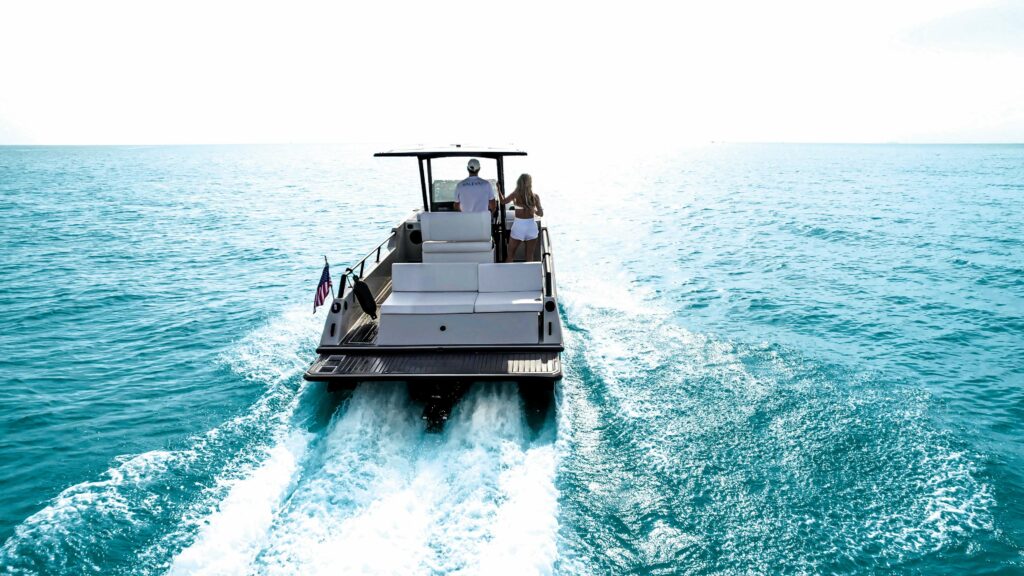
Propulsion challenges
Halevai selected the Mercury Alpha One Gen II as the drive system; a cost-effective, tried-and-tested solution that is already familiar to the market and should give comfort to those who may be unnerved by the switch to electrification.
While less efficient than a direct line drive, the Alpha One’s stern drive set-up – which takes multiple 90o geared turns from the shaft through the transom, upper and lower housings to the propeller – is cheaper in price, with lower maintenance costs and much better low-speed manoeuvrability.
“That low-speed performance is really important for us, because most incidents that occur in boating happen in marinas with other boats,” explains Heidinger, who acknowledges that many users in this sector are not always the most experienced boaters on the water.
“Straight-shaft boats have a big propeller and a rudder behind it, so they tend to overturn or under-turn, and they usually need an additional bow thruster to give them the range of motion. With the stern drive, you lose some power because of the transitions, but what you get instead is a lot of slow range manoeuvrability.”
The Alpha One is Mercury’s entry-level offering and it comes backed by a large dealer network, with plenty of places capable of servicing. It is actually designed for use with diesel engines up to 150 bhp, but in this case it is paired with the Cascadia Motion iM-225 electric motor.
Like the Alpha One, this is a cost-effective but hardy, secure and reliable solution from a credible, US-based company that is already well established on the EV conversion scene. It is a combination that gives the Halevai a very familiar look and, says Heidinger: “It doesn’t say electric anywhere, so it is impossible to tell it is any different.”
The iM-225 module combines the HVH250 motor core with either a 480 V DC CM200DX inverter or an 840 V CM200DZ inverter, and it also includes an integrated oil pump, oil cooler, oil sump and water pump. It weighs in at 64 kg and its compact package – measuring just 300 mm in axial length and 405 mm in height, with a shallow sump depth of 170 mm from shaft centreline to the bottom – minimises the amount of space it takes up onboard.
It has a peak torque of 500 Nm and peak power of 225 kW at a maximum 12,000 rpm, and it can run continuously at 230 Nm, delivering 110-135 kW.
Until tested, however, it was not certain whether the combination of the iM-225 and the Alpha One stern drive would be strong enough to push the hull at the speeds required by the team. If not, the step up to the next level, Bravo Two, would have been significantly more expensive and could potentially have pushed the project beyond feasibility for the entry-level market conditions.
That meant the team had to make this solution work, but in early testing it quickly became apparent that some engineering was needed.
“The Alpha One is designed for V4 four-cylinder piston engines, and the electric motor’s 225 kw output, which is around 300 horsepower, exceeded the torque threshold,” says Heidinger.
“The drive’s gearing in the upper housing has tolerances and torque limits, and if we were to use the full power of the motor, it would have so much torque that we would blow through those tolerances and rip the gearing apart, so we have had to limit the power down to about 150 kW, which is around 220 bhp, to give a handleable torque of 300 Nm. So there is still a lot of power, but it won’t exceed the torque limits on the drive.”
Battery choices
Halevai partnered US-based battery manufacturer Hypercraft to design, build and process a bespoke, 100 kWh battery solution. Hypercraft, which specialises in off-the-shelf power systems for a range of different land vehicles, had already tested and proven its products in offroad electric racing, but had never been involved in marine applications.
However, after exploring other options in Europe, involving significantly higher prices per kWh, longer lead times and the slow, geopolitically risky boat-shipping methods required to transport lithium batteries, US manufacture was the only option.
Adapting Hypercraft’s existing products to meet the demands of this new environment, however, was not a simple process, as Heidinger explains: “Pack architecture for marine is very different. We had to define where busbars would go, where cooling plates would go, and work out the thermal reduction. To do that, you need to be able to go to the shop and work these things out in the field.
“It was not so much about the cells themselves, but more how the packs were going to be built and configured, how they would fit in the hull, what their overall weight would be and, ultimately, how big we should make them.”
Heidinger defined a target range of 30-50 Nm, but as this can be affected by the carrying weight – both of people and kit – and by different weather conditions and sea states, the team carried out months of sea trials in different locations to determine the optimum battery size. It quickly became clear that the initial option of a 60 kWh pack did not deliver the ranges required, and that a 100 kWh pack would be required to ensure the batteries had enough buffer capability.
Following further trials of different configurations of the 100 kWh pack – built from individual packs ranging from 10 kWh to 40 kWh – the team settled on four 25 kWh packs to best meet the requirements for easy build, maintenance and cooling.
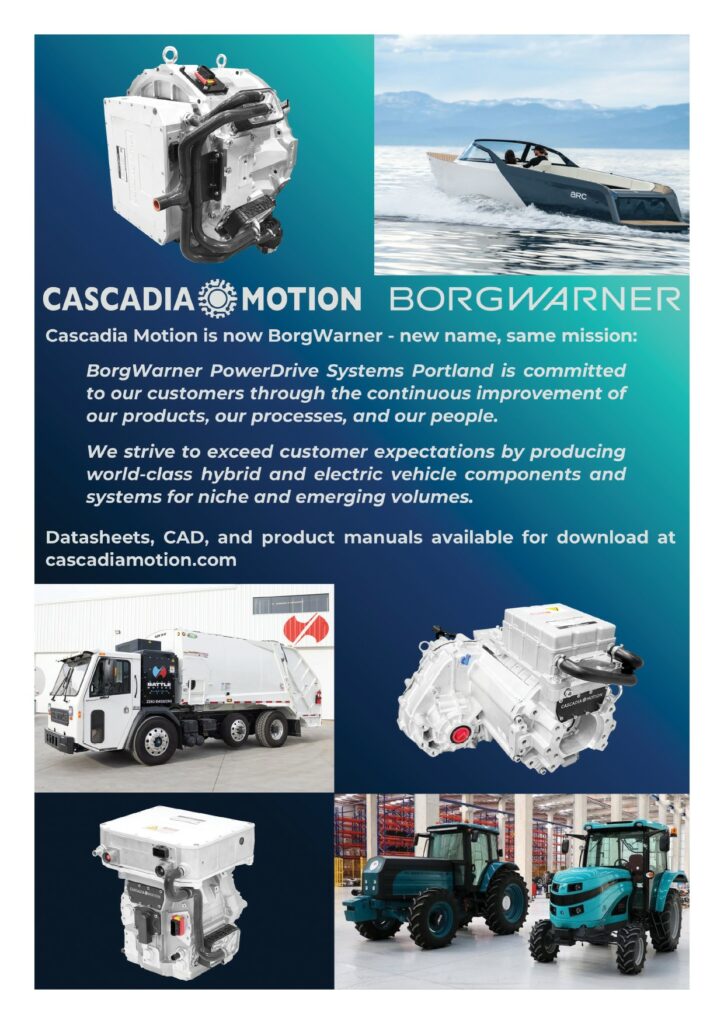
“If we had 10 packs of 10 kWh, there’s a lot of cooling lines and if you have two 50s, there is less thermal reduction side, but they are hard to get in and out. We warranty those packs for four years, so with a 25 kWh unit we can swap packs in and out more easily if we need to,” Heidinger adds.
The packs weigh around 115 kg each, which compares extremely favourably to others of the same size that are upwards of 680 kg, but the need to increase battery capacity by 40 kWh still added extra unwanted weight. This had to be removed from elsewhere, and the team had to re-evaluate the composite structure of the prototype to see what weight could be removed for a fully commercial build, adapting the infusion process to explore the use of different composites and inlay methods.
“In a prototype, a lot of parts are hand-cut and fitted, so there is inherent inefficiency there with extra resin,” explains Heidinger. “We reduced weight by changing the composite layout, but we also looked at the overall use of materials.”
The T-top, for example, was switched from fibre glass to a very heavy-duty but lightweight marine canvas. This reduced the weight of the standard boat, but remained available as an option if people preferred to sacrifice a bit of range. The company is now several iterations beyond the original prototype and it has cut about 300 kg from the overall weight.
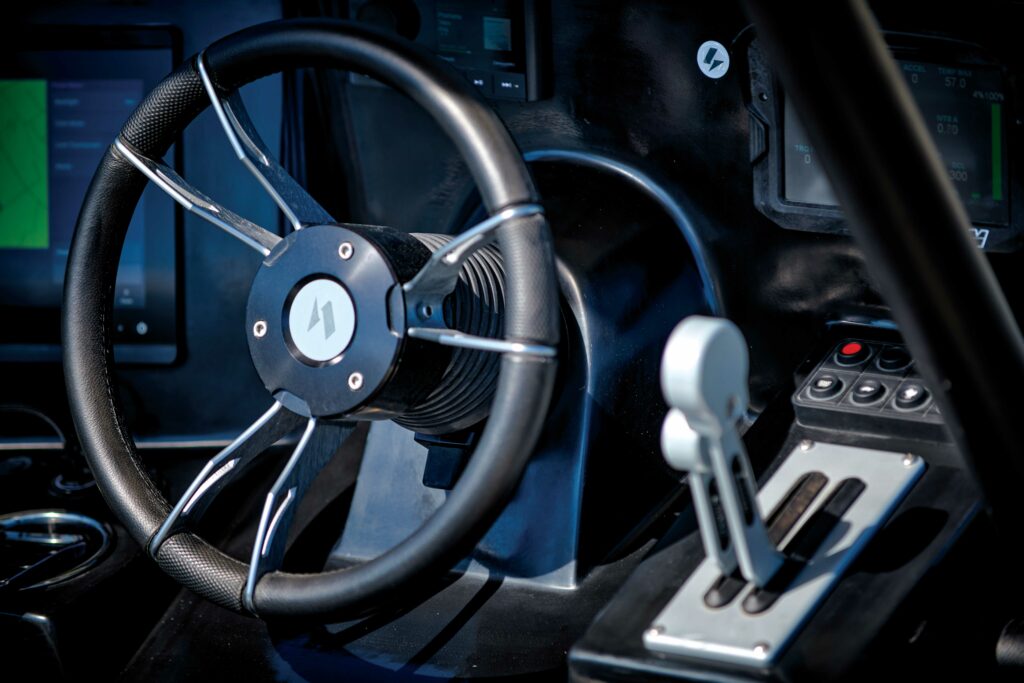
Usability and safety
Heidinger concedes that the range of around 35 Nm is still limiting when compared with fossil-fuel equivalents, but he sees this as an opportunity and not a barrier, suggesting it should be embraced rather than feared.
“There is something nice about the visceral, human experience you have when you think about range and what you can do with it,” he suggests. “I feel it puts you more in contact with nature. If you have an unlimited amount of gas, you can go anywhere, but that is not what this boat is about. This is a day cruiser, and once you start to understand the range, you plan around it.”
With much of the time spent in the efficient but high-power range, cooling both the motor and batteries is paramount. The model2050 employs two systems for this: a 50/50 motor coolant for the batteries and motor, coupled with a raw, water-cooled radiation system.
Both of these are “very standard”, making for easy maintenance. When the dashboard signals ‘coolant low’, which happens about once a year, a quick trip to any auto-parts store will suffice. Equally, the electric propulsion system allows a new level of operational ease, with keyless entry and a single-button operation.
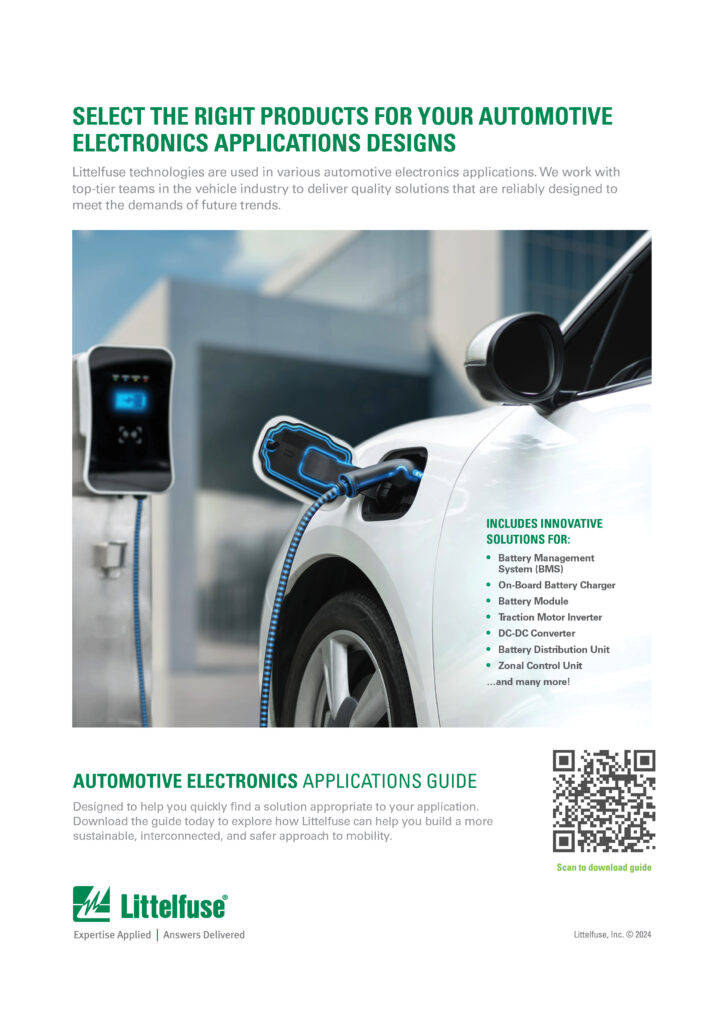
The power density of the big pack allows the power to be left on the whole time when out at sea, eliminating the need for noisy, CO2-emitting diesel generators to charge the 12 V battery, play the radio, keep the navigation screen on, charge laptops and phones, and even blow inflatables up.
To eliminate accidental operation of the prop, the boat has a large, red button on the dashboard to disengage the propeller, and as soon as the boat is ready to operate, pressing the green button puts it into operation.
The entire battery system is IP-rated for submersion. A significant amount of early testing was spent determining where the tolerances lay and what would occur when and if arcs are caused, ensuring the potting of the pack is adequate to take such an event.
“We spent two months at a lake last fall stress-testing,” says Heidinger. “We had some friends there working with us and it was a very ‘start-up’ situation. We would test, go back, take all the packs out and bring them back to the lab in Utah. They were then sent out for third-party testing for certifications and redesigns before we came to the final pack design.”
The approach to charging that Halevai has taken is another interesting one. In EVs, range anxiety has led manufacturers to pursue fast charging solutions, but in the marine world things are different.
From day one, the plan has always been for these boats to be charged using the 240 V power supplied through the mains electricity grid.
“We don’t mess with supercharging for two reasons,” Heidinger says. “Firstly, recreational craft do not typically go from point A to B to C and so on; they go from A to B and back to A, back home or to your trailer. You really only need Level 3 charging if you are going on longer journeys.
“Secondly, to add it would require a thermal-reduction circuit with coolant, but that adds weight and expense, so we’re not really entertaining it.”
Heidinger notes that in the US, at least, the quality of circuits does range – some 50 A circuits come in at 32 A – but he believes that for the battery onboard, the speed of overnight charging is perfectly adequate for the typical use case.
“Electric not only allows home charging, but there is also charging infrastructure in every marina or safe harbour,” he continues. “All you need are a twist lock converter, available on Amazon for $17, and a Level 1 or Level 2 charger, again available on Amazon for $70, and it will take 40 hours to charge from 20% to 98%.”
So, leaving a boat overnight on a 120 V supply will add 50-60% of charge to the battery for the next day, while a 240 V full charge will take between eight to 12 hours. Perfect for daily boating.
In fact, in many of the locations where these boats will be used, Heidinger believes the ability to slow charge from a home mains socket is one of the biggest selling points for the model2050.
“Refuelling is a huge problem in some of these communities,” he says. “A lot of people who convert to our boats say they are doing it just so they don’t have to think about when they can get gas. A lot of small lakes have one station, open for limited hours, so people have to think hard about refuelling with gas.”
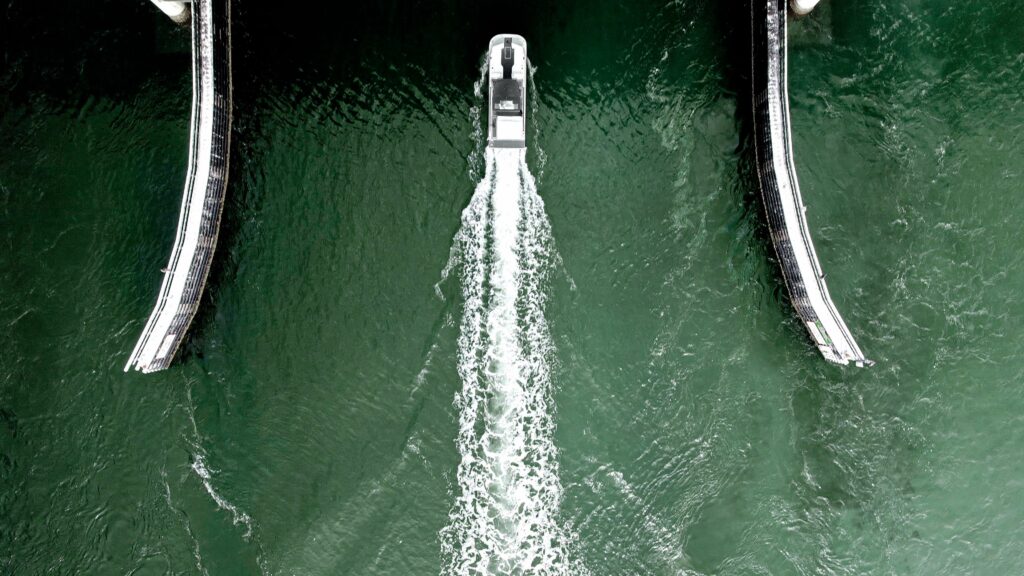
Power mapping
Tuning the powertrain was a vital part of the boat’s development and, once again, Halevai partnered Hypercraft to develop the system. Using AEM components that are standard in the industry and creating bespoke UI software to operate them, the team put full control of the boat in the hands of the VCU and spent a significant amount of time developing throttle maps that could handle the immense power at its disposal.
The aim was to create a progressive map that provided power and performance in all the right places. This led to the bottom 40% of the throttle delivering incrementally slow power increases in both forward and reverse to enable the boat to have high manoeuvrability in tight spaces, and a top end that delivers quick-access power at higher speeds. Development involved an iterative process of mapping, dropping into the VCU and testing, with the results all based on personal feel.
“Once we’d done a test, we would get onto the engineering team and play with the power curves,” says Heidinger. “They would change the values and send us a new map 20 minutes later. We did that for days to get all those subtleties worked out in the low end, and once we were happy with all those low-power conditions we went to the high end.”
In a boat of this kind, that all revolves around use cases; for example, having the power to pull a water ski while also having the ability to cruise at speed efficiently. “At the top end, we ended up with throttle movements to go from planing to 18, 18 to 22, and 22 to 27, so we moved through those ranges and once we came to a conclusion we baked it in.”
The initial plans also included a three-feature function – similar to sport or economy modes in an EV – but that was ditched on the basis that it was not really needed.
“It sounds nice, but it really doesn’t give you any real benefit,” says Heidinger. “The original control board actually included a set of buttons for this, but during testing we discovered it was not so important. What we have done though is built energy conservation into the VCU as you go through the state of charge.”
This is one of the most innovative elements in Halevai’s propulsion design and it is based on the principles of diving, which is one of Heidinger’s hobbies. “Typically, in technical diving you go 50% out, 50% back,” he explains.
“In cave diving, you go a third out, a third back, with a third to spare. So, we were thinking about it in those terms. The battery use becomes more important in the lower 50% of battery capacity because you need to keep enough back to get home.
“In the top 50%, have it all, have a blast, but once you’re halfway through the power, you need to think more carefully. How far out are you? How much time do you have left? What speeds are you going to use? So, we set up visual indicators to help people be aware of this.
“At 50%, we are not going to take anything, but at 30% we toggle down the torque to limit top speed to 18 knots, and at 20% it drops to 16. It is unsafe to take all the power away, because in some conditions you need enough power to put the bow up, but if you do that too often you will run out of power – but that’s exactly the same on a gas boat.”
This is a very different approach to some electric boat manufacturers out there, which are travelling down the Tesla route and offering the equivalent of the pioneering EV brand’s Ludicrous mode.
“I was on another electric boat recently that was extremely fast and impressive, but at those cruising speeds it had a 12 Nm range,” says Heidinger. “That power is a real wow factor. It’s like driving a Plaid Tesla for the first time, but it doesn’t necessarily match what people want to do.
“In a place like Lake Oconee, Georgia, they want to cruise at speed from their house to the Ritz Carlton, have dinner, and have enough power to cruise back again. It’s a 24 mile round-trip, and they have certain ranges and speeds they want to go at, so we make that possible. They were the kind of numbers we developed, and that is exactly what you can do.”
Scaling for the future
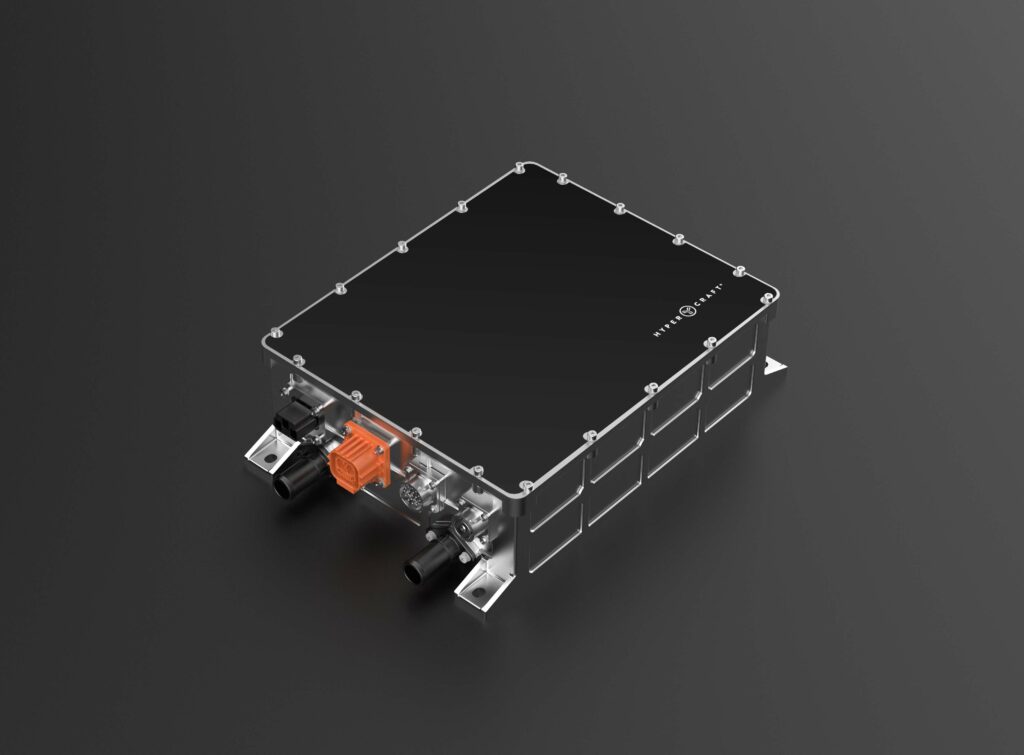
Having developed, tested and refined its initial prototype, Halevai is already planning for the next stage, forming partnerships with credible craftsmen to mass-produce the boat.
The prototype was built by a small, in-house team in a private yard, but the tooling developed there has since been moved to Lyman Morse, a large-scale organisation in Maine, which has been building boats for 100 years.
That newly-formed partnership includes a commitment to make a set number of boats. Once the orders start to come in, another manufacturing facility in Louisiana is lined up to come onboard and develop the boats at even greater scale.
Ultimately, it is Heidinger’s ambition to use the mass-market model2050 as a platform to pioneer new materials, manufacturing processes and innovations, making the marine industry more sustainable one step at a time.
“It would have been great to re-evaluate the entire system in one go, but the problem is that those supply chains are way bigger than we are,” he says. “If you look at Lycra, the fabric was developed by DuPont in the 1920s, but it took 100 years for it to become pervasive, because the supply chain didn’t want to accept it. So, the supply chains have to change for you to be able to build things at scale with labour that can do it.”
The company is already working with two UK universities – Southampton and Wolverhampton – as well as a number of global organisations to evaluate new materials, and Heidinger believes there is serious potential to upscale biotech boats within the next 20 years.
However, he caveats: “That’s not going to happen if universities are building one-offs and just showing them off in magazines. That’s not influencing the supply chain. It’s great, and the kids in school should be doing that work, but manufacturers have to be able to certify it, adopt it, develop the tooling and find the labour to build with those materials. Then, there needs to be general acceptance, so the price is low enough to stay in market with the competition.”
So, the first step in the revolution is done. Halevai has designed an efficient composite electric boat for a specific target market, built it, tested it, and is now putting it into production. It has even integrated wiring into the canopy to fit after-market solar for 12 V charging, if required. Now, Heidinger hopes to use this as a platform for ongoing innovation.
“This first boat is changing the machine, the experience, the cost of operation and maintenance,” he says. “Our customers will adopt that and over time we will be able to think about innovation – things like developing biotech decking-replacement solutions, or covering the surface of the boat with clear-coat solar cells that capture 1 kWh on a bright sunny day, so you could drive the boat at 4 knots until the sun sets. Those are the types of evaluations we’ve done and want to work towards.
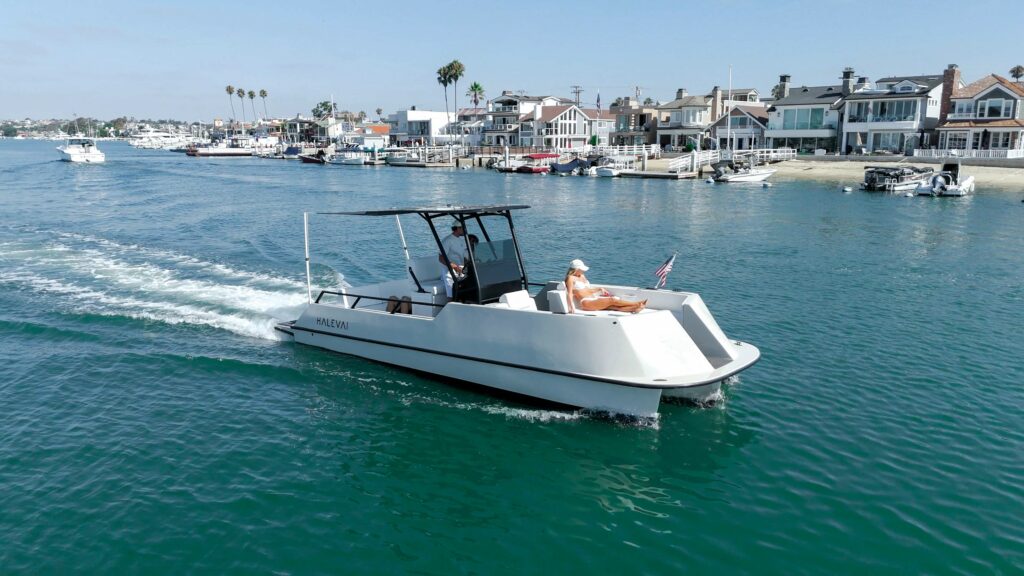
“Of course, right now the powertrain is only fully sustainable if it is charged using renewable energy. The grid is not fully renewable, so that is not always the case, but we’re thinking about 2050. That is why the boat is named the model2050. What is the world going to look like then? What will the marine water sector be doing? And what will these small boats look like? If countries do a good job of bringing more renewable energy at a low cost, these vehicles make a lot of sense.
“For now, this is all about building the best machine we can at the lowest cost for a very competitive market and staying focused on our core demographic to maintain customer satisfaction.
“I cannot wait to be in a position where production is working and I can free myself up to look at all these other things, all these new and future innovations, which are near and dear to my heart, but we need to go one step at a time.”
Click here to read the latest issue of E-Mobility Engineering.
ONLINE PARTNERS

















